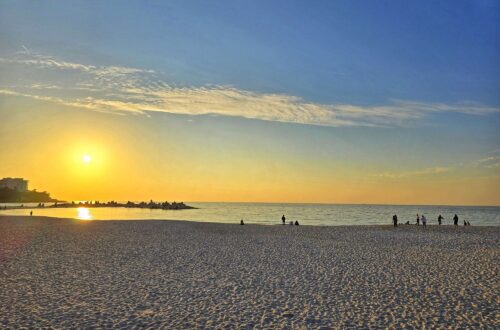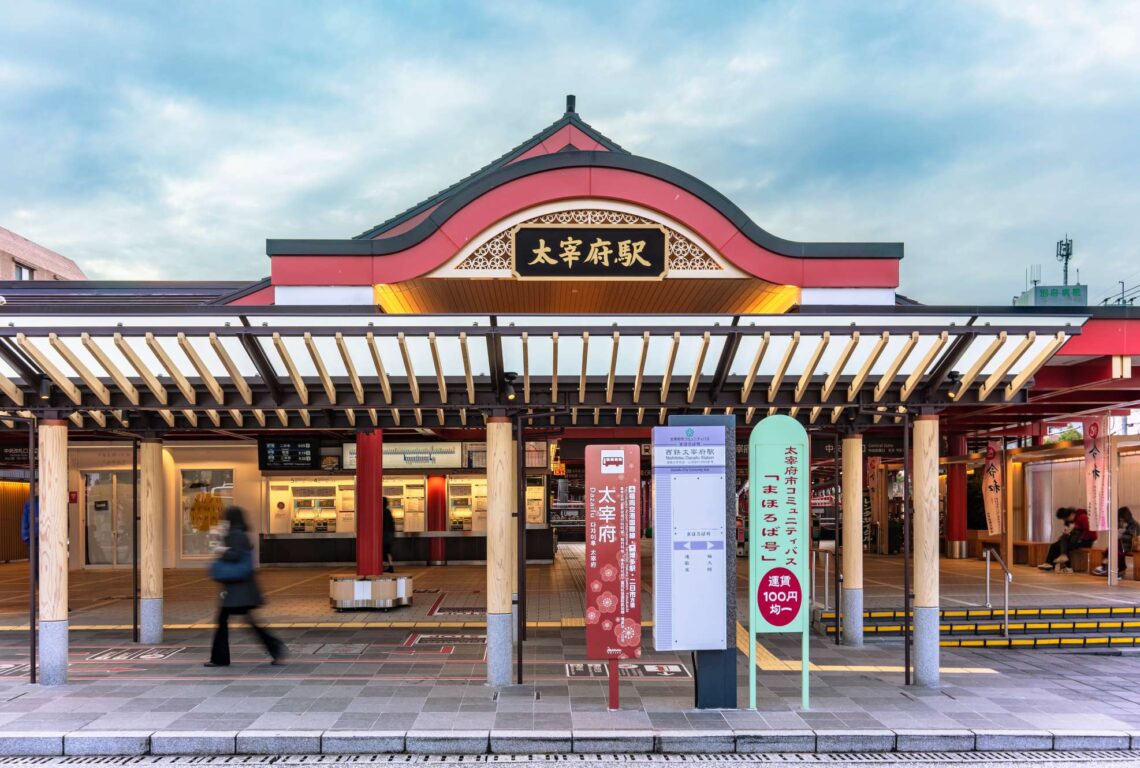
Dazaifu – The Ultimate Guide to Japan’s Former Western Capital
Did you know the small city of Dazaifu (太宰府) was once shared the status as the capital of Japan together with the famed Kyoto (京都)? Located 15 kms southeast of Fukuoka (福岡), this city once served as the bridge that connects Japan and the outside world. In fact, the city traced its origin 1,300 years ago and was once a major cultural and political hub. Despite being a fraction of its former glory today, it remains a hidden yet significant travel spot simply for its historical value. Let’s explore what the once magnificent capital has to offer:
- What is the history behind this small city?
- Which attraction is not to be missed in this city?
- Are there museums to explore in this historic city?
- Where can I see the ruins of this once majestic capital?
- Looking forward to travelling off the beaten path?
- Interested in hiking across the beautiful mountains of Japan?
- Finding a place to satisfy your delicacy cravings?
- What are the transportation and accommodation options for Dazaifu?
Table of Contents
History of Dazaifu
Dazaifu - The Mini Chang'an of Japan
Dazaifu itself was modeled after the city of Chang’an in China (present day Xi’an) and the person responsible was a statesman by the name of Awata no Mahito (粟田真人). He was said to be a man of culture and responsible for assimilating Confucianism into the government’s code of ethics. In AD 702, the Emperor sent him on a mission to Chang’an to reestablish diplomatic ties after a recent conflict between both countries. The Emperor at that time, Wu Zetian (the only lady Emperor in China) was impressed by his strong knowledge in Chinese classics and eventually granted him a temporary position in the Imperial Chinese Court.
After a year, Mahito returned to Japan and designed the cityscape of Dazaifu based on Chang’an. During that time, Chang’an was the most advance city in the world; serving as the role model for city planners. Similarly to Chang’an, the entire city was built based on the traditional grid pattern like a chessboard with two gates (one each in the north and south respectively). Even the southern gate (aka the Suzaku Avenue/Suzaku Ouji/朱雀大路) served as the main gate and shared the same name as its counterpart in Chang’an.
The actual tale of decline of Dazaifu was rather murky; instead there were a couple of factors that influenced it. The late 12th century saw the rise of the Kamakura (鎌倉) as the second capital during the rule of the Kamakura shogunate. Furthermore, the 13th century saw the invasion of the Mongols along the bay of Hakata (present day Fukuoka). These events weakened the rule of the central government and prompted the shift of administrative centres to more crucial locations such as Hakata.
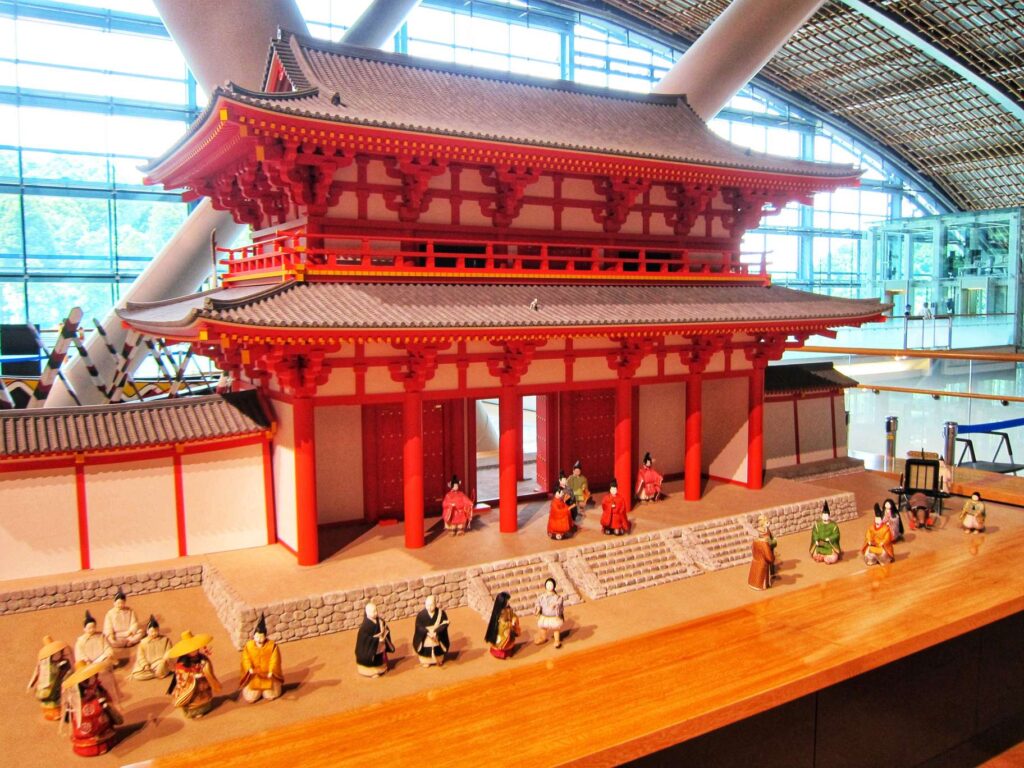
Dazaifu's Impact on Japanese Culture
Despite being a small city (and a far cry from its former glory), Dazaifu had impacted the Japanese culture strongly in several ways. Firstly, Dazaifu was a hub for poetry; over 300 poems from the renowned Man’yōshū (万葉集/the oldest collection of classical Japanese poetry in Japan) were composed by renowned poets in Dazaifu.
From AD 724 – 748, many renowned poets stopped by the residence of Otomo no Tabito (大伴旅人), the Governor-General of Dazaifu to conduct peom recital sessions under the transient plum blossom trees. In fact, the current era name, Reiwa (令和 meaning beautiful harmony) was chosen from the preface of one of these poems.
Dazaifu also has a strong affiliation with the famed Sugawara no Michizane (菅原道真), a renowned poet, scholar and politician during the 9th century. Michizane was a renowned and loyal minister of the Imperial Court who was framed by a rival clan and eventually banished to Dazaifu. This also turned out to be his final resting place and the Dazaifu Tenmangu (太宰府天満宮) shrine was erected to commemorate him as a deity.
Because of his accomplished academic achievements, many students often visited his shrine and prayed in order to pass their examinations. His hauntings of the Imperial Court after his death was also extreme to the point that locals classified his case as one of Japan’s top three vengeful ghosts.
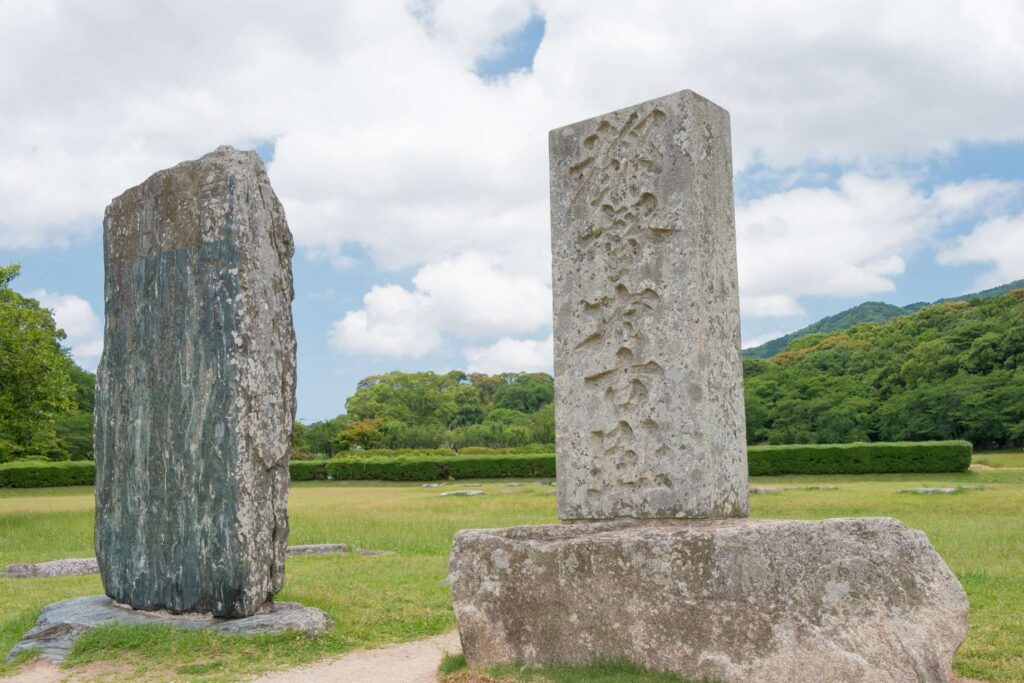
Exploring Dazaifu
The Must See Attraction of Dazaifu
Dazaifu Tenmangu shrine (太宰府天満宮) – The uncontested poster boy of Dazaifu when it comes to attractions. The one site that is promoted by various other travel sites as the first go-to destination in Dazaifu and for good reasons. Firstly, its just a few minutes walk from the train station. Secondly, it impresses with its stunningly beautiful architecture; especially the main hall that coordinates a variety of vibrant colours that contrasts well against the vermillion colour of the structure.
And thirdly, this shrine enshrines the renowned Sugawara no Michizane (菅原道真); a loyal and talented minister who was unfortunately framed and exiled by the Imperial Court. He was later deified and many locals, especially students will often visit the shrine to pray for success in their examinations and entrance exams. To find out more about this rich and majestic shrine, check out my separate article here for further details.
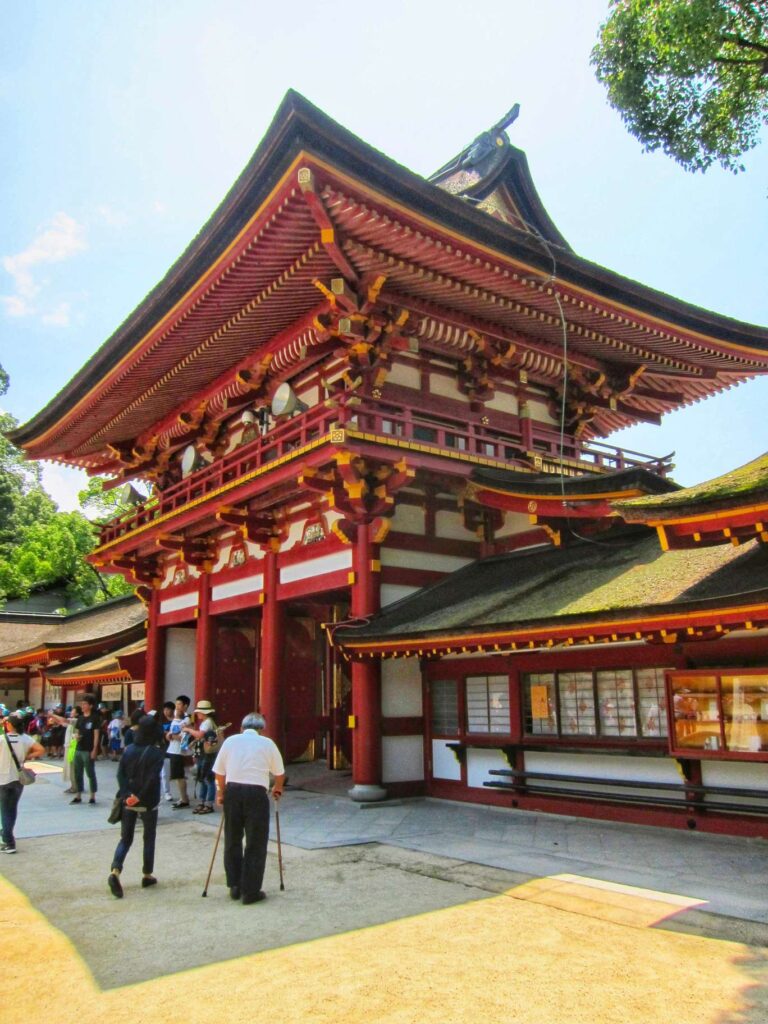
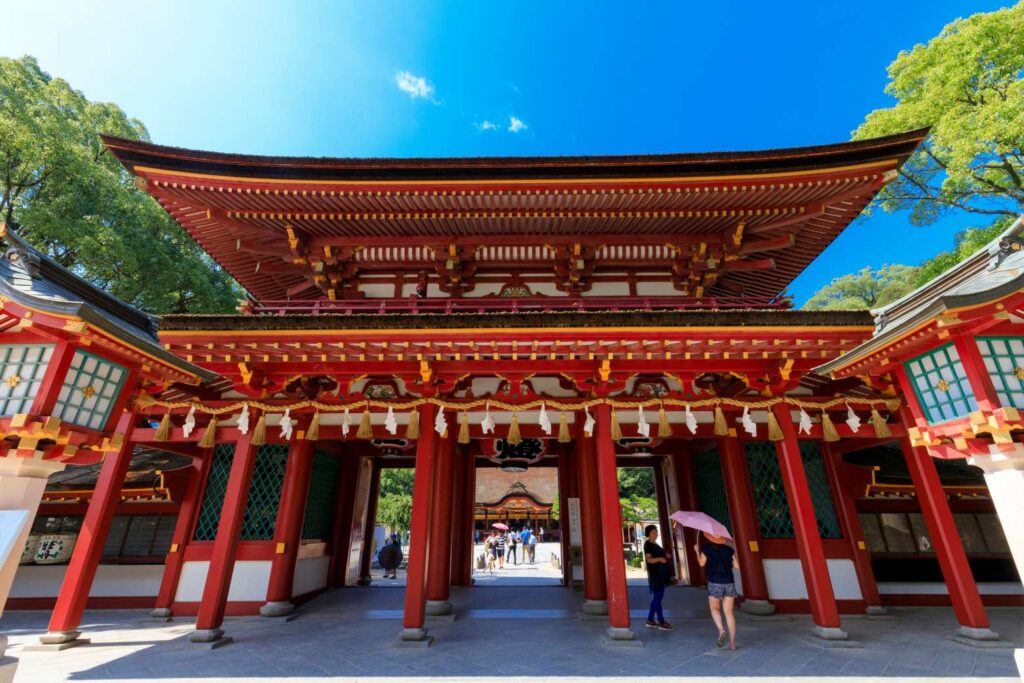
Are You a Museum Lover?
Kyushu National Museum (九州国立博物館) – The latest addition to the list of national museums in Japan. Unlike the other national museums in Japan that are designed in either the Baroque style or French Renaissance style, this one instead features a futuristic and slick architecture style. This museum exhibits a variety of artefacts from the pre-historic era to the 1800s, all in display inside a peaceful and spacious hall. Learn more about this futuristic museum in my separate article.
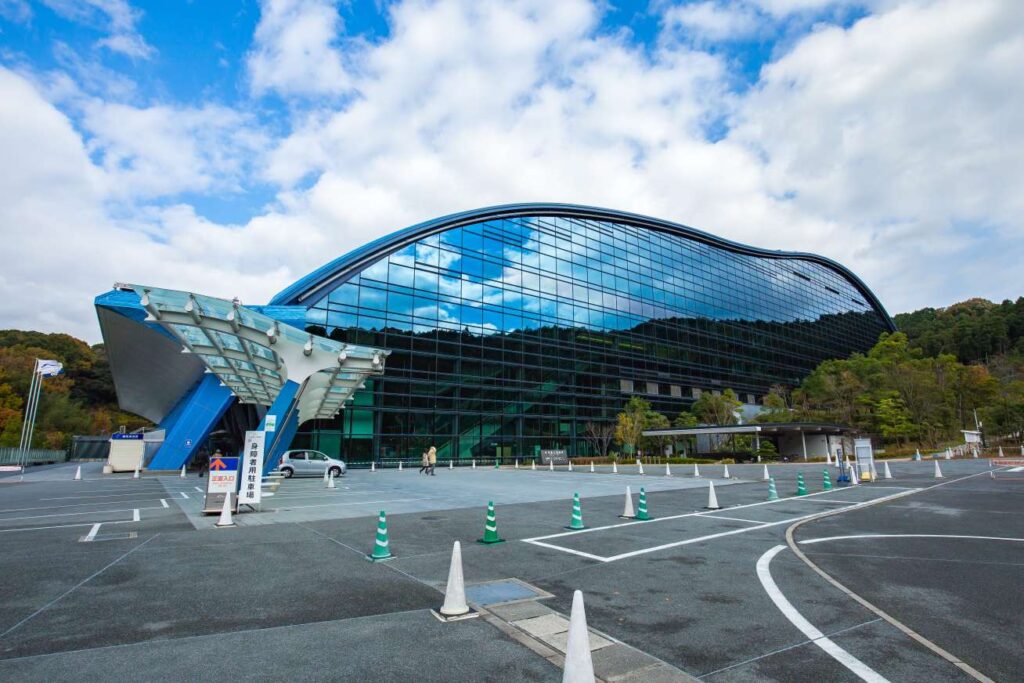
Kanko History Museum (菅公歴史館) – A small hidden museum that is tucked behind the famed Dazaifu Tenmangu. The name Kanko (菅公) is actually an alias of Michizane. And just like the name implies, the museum focuses solely on retelling the story of Sugawara no Michizane (菅原道真), the deity of Dazaifu Tenmangu. The story is told through clever use of dioramas that feature traditional Hakata ningyo/unglazed clay dolls (博多人形). A lovely museum to visit for those wanting to learn more of the famed Michizane.
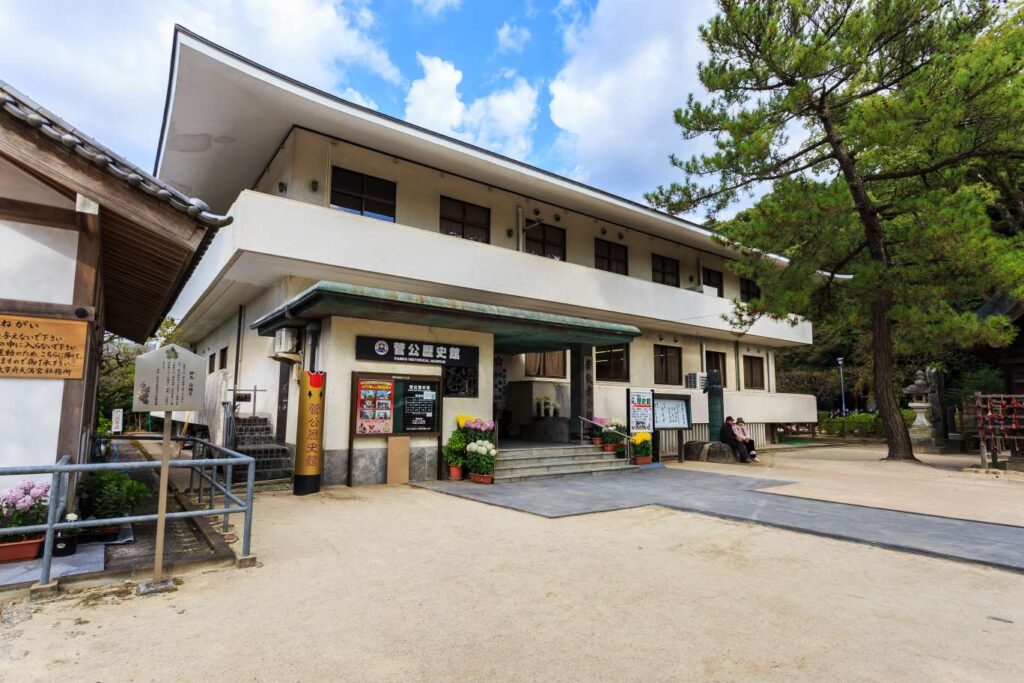
Dazaifu Tenmangu Museum (太宰府天満宮 宝物殿) – Alternatively known as Homotsuden/宝物殿 (treasure hall in English), this shrine museum was founded in 1928 and is actually the first registered museum in the prefecture. The go-to museum to learn more about the shrine’s history in detail. Don’t miss out on some of the museum’s unique displays too, including the Kenuki-gata Tachi (毛抜形太刀/a sword with a uniquely designed tweezer shaped handle) that is an Important Cultural Property in Japan.
- Plan to visit all 3 museums? Consider getting the Combination ticket then. This ticket allows you to visit all 3 museums for 1,000 Yen (which usually costs 1,400 Yen in total) and is purchasable from any of the 3 museums.
Visit the Ruins of the Former Glorious Capital
Dazaifu Government Office Ruins (大宰府政庁跡) – The site of the once magnificent government complex that administer the entire island of Kyushu. Today, only the stone foundation remains and the site becomes a public park. Nevertheless, one can imagine the sheer magnificence of the complex that once served as an international arena while strolling along the park and checking out the stone foundations. This site is also a popular local cherry blossom viewing spot to add into your checklist (end of March to beginning of April). Also, look out for the nearby Dazaifu Exhibition Hall that exhibits the findings of the excavations as well as explaining the history of Dazaifu in further details.
- To get to the Government Office Ruins, board the Nishitetsu Bus (西鉄バス) from Dazaifu Station (太宰府駅) and get off at Dazaifu Seicho Ato (大宰府政庁跡) bus stand.

Kanzeonji (観世音寺) – Former centre of Buddhism in Kyushu, this temple was founded by Emperor Tenji (天智天皇) during the 7th century in honour of his late mother, the Empress Saimei (斉明天皇). It was one of the only three temples that contain an ordination hall during its time; and also the major temple of Dazaifu. However upon the decline of Dazaifu, so too did the temple as it lost many buildings and gates over the centuries. Today, the temple grounds remains one of the most pleasant and quiet places to explore in Dazaifu. And it also houses the ever important ordination hall (Kaidan-in/戒壇院) as well as the oldest temple bell in Japan.
- To get to Kanzeonji, board the Nishitetsu Bus (西鉄バス) from Dazaifu Station (太宰府駅) and get off at Dazaifu Shiyakusho-mae (太宰府市役所前) bus stand. Then, walk for about 3 minutes to Kanzeonji complex.
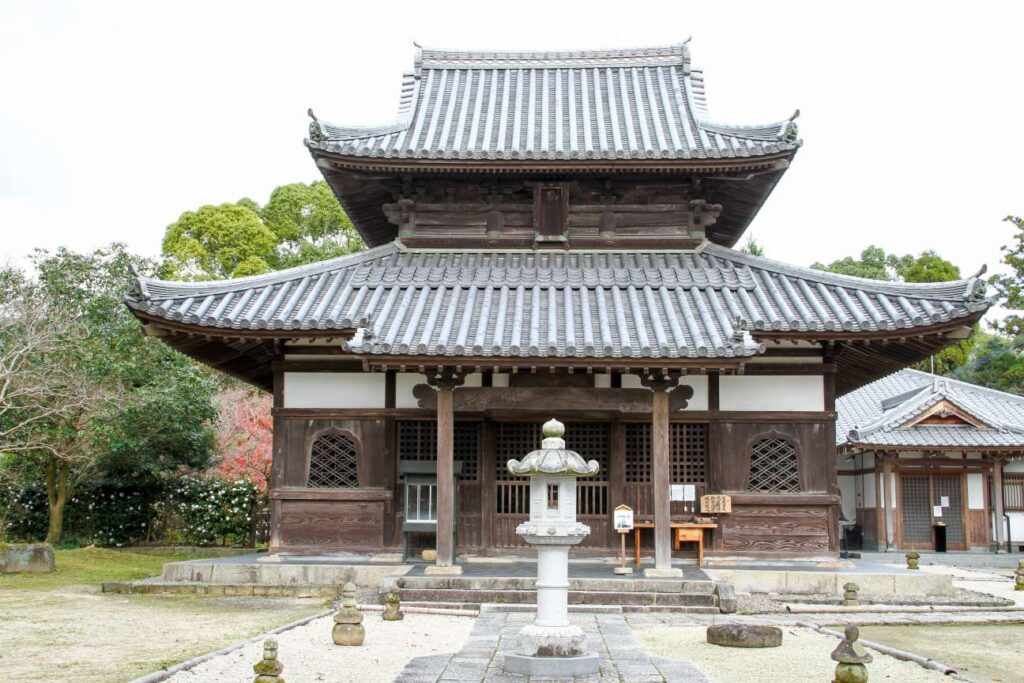
Getting Off the Tourist Track
Mizuki Fortress Ruins (水城跡) – A former fortification that was built in AD 664 after Japan’s defeat to Korea’s Kingdom of Baekjae. The moat itself was modelled based on the ones at the capital of Baekjae; comprised mainly of moats filled with water and mould that serve to defend the capital from enemy attacks. The height of the wall is 9 metres tall and stretches for several kilometres.
Today, one can witness the remains of the wall, hidden and covered inside towering lush trees. To get a better picture of the walls, visit the nearby Mizuki Museum (水城館) that exhibits informative displays of the moats. Also, consider paying a visit between late-March until early-April as this place becomes a local hotspot for cherry blossom viewing.
- Consider renting a bicycle from Dazaifu train station for 500 Yen a day. This is a convenient way not just to get to the ruins but also explore the nearby attractions including the Government Office Ruins and the Kanzeonji temple along the way.
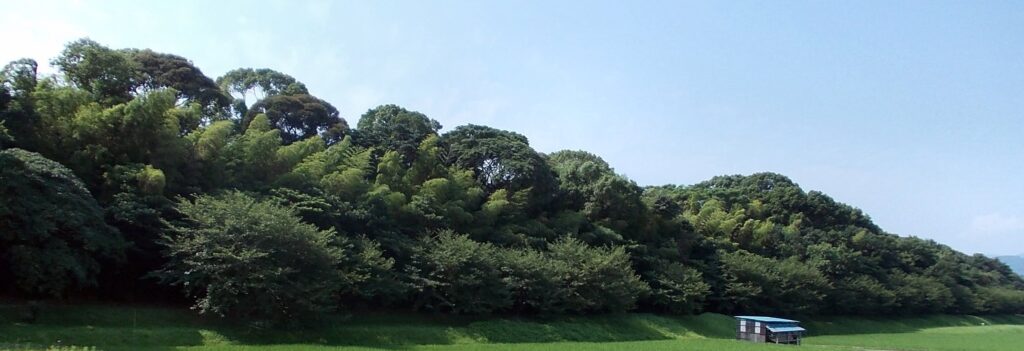
If You Are Into Hiking
Mt Homan (宝満山) – Long ago, this hiking route was the place for ascetic practices of the Shugendo (修験道/mountain worship) due to its tranquility. Today, it is popular pilgrimage route among locals praying to find the right partner in life. The route itself starts from Kamado Shrine (Kamado-jinja/竈門神社) at the foot of the mountain and ends with a breathtaking view of Dazaifu at the mountain’s summit (829 metres above sea level).
Along the way, one shouldn’t miss out on the enchanting forest sceneries while climbing up the steep stone stairs known as Hyakudan-gangi (100段ガンギ). The duration of the hike is around 4 hours and it is a wonderful place to start a morning hike. For a more colourful hiking experience, consider visiting during spring (late-March to early-April) for the pink cherry blossom and autumn (mid-November till end-November) for the vibrant fall foliage.
- To get to Kamado Shrine, take the local Mahoroba (まほろば) bus from Dazaifu station (太宰府駅) and disembark at Uchiyama Kamado-jinja-mae (内山 – 竈門神社前). The journey duration is around 10 minutes.
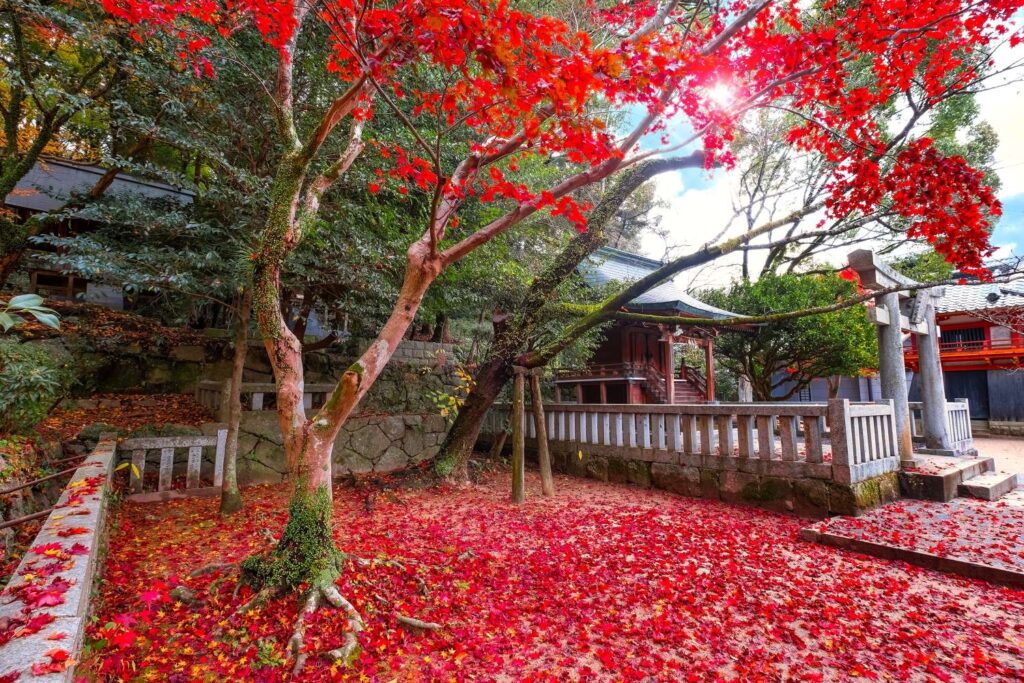
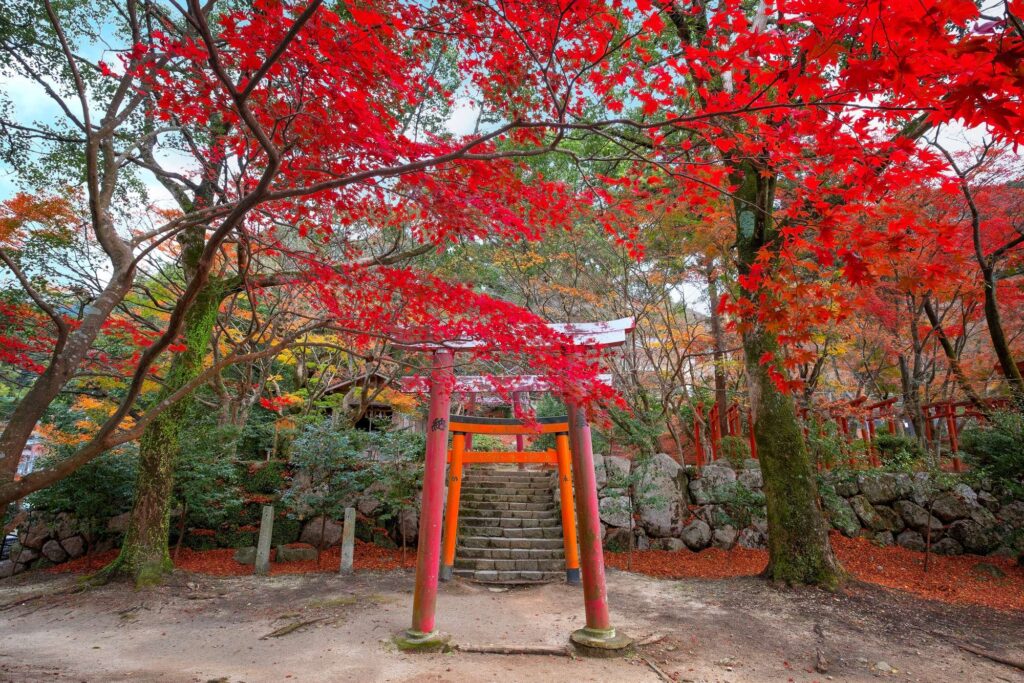
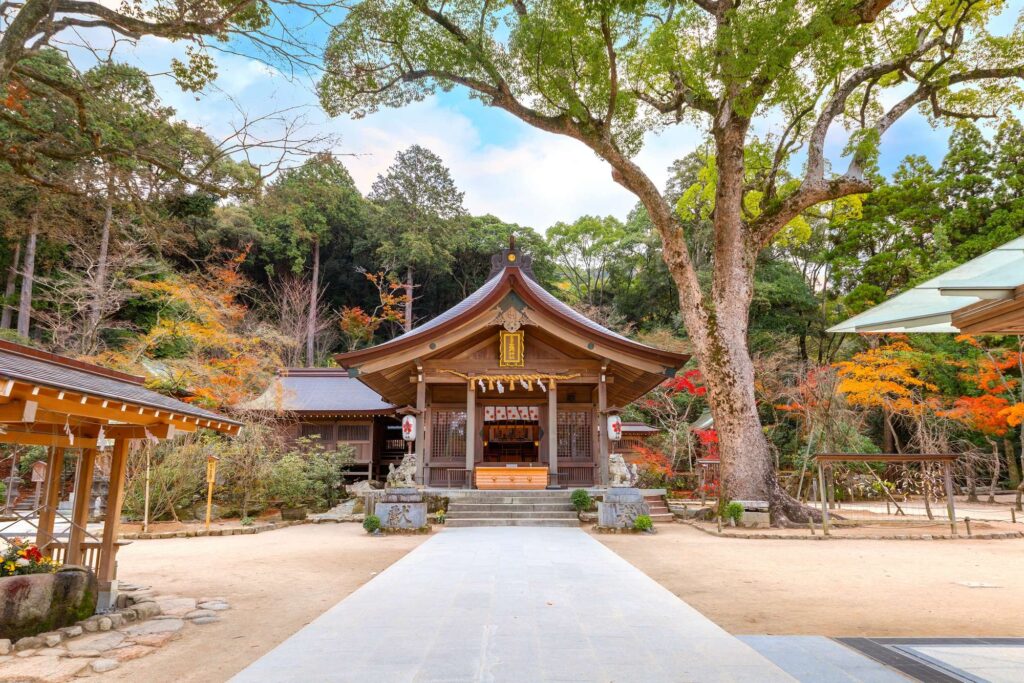
Are You Hungry Already?
Look out For Dazaifu's Exclusive Delicacy
Umegae Mochi (梅が枝餅) – A warm and crispy grilled rice cake, filled with sweet red bean paste together with an imprint of a plum on top of it. Ask anyone on what delicacy is famous here and they will immediately answer Umegae Mochi. Plenty of shops along the streets of Dazaifu Monzenmachi do sell this; including traditional shops such as Kasanoya (かさの家), Yasutake (やす武) and Teradaya (寺田屋). See my article here to learn more about the history of this delicacy.
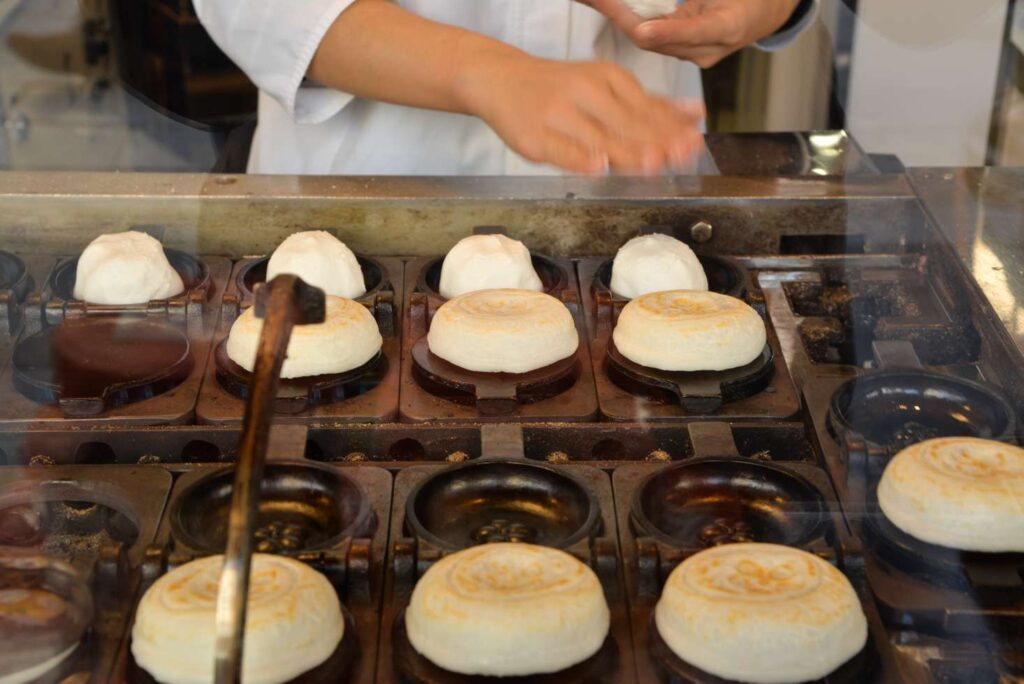
Those Looking for a Quick Munch
Ichiran Dazaifu Sando (一蘭太宰府参道店) – Quite possibly the most recognisable ramen (ラーメン) chain restaurant in Japan; featuring the soul food of Fukuoka, the Hakata Ramen (博多ラーメン). A delicacy not to be missed for its rich and creamy pork broth and thin chewy noodles. A wonderful place for those seeking a quiet place to enjoy a meal, as the restaurant offers a private booth for each customer to savour their noodles in peace.
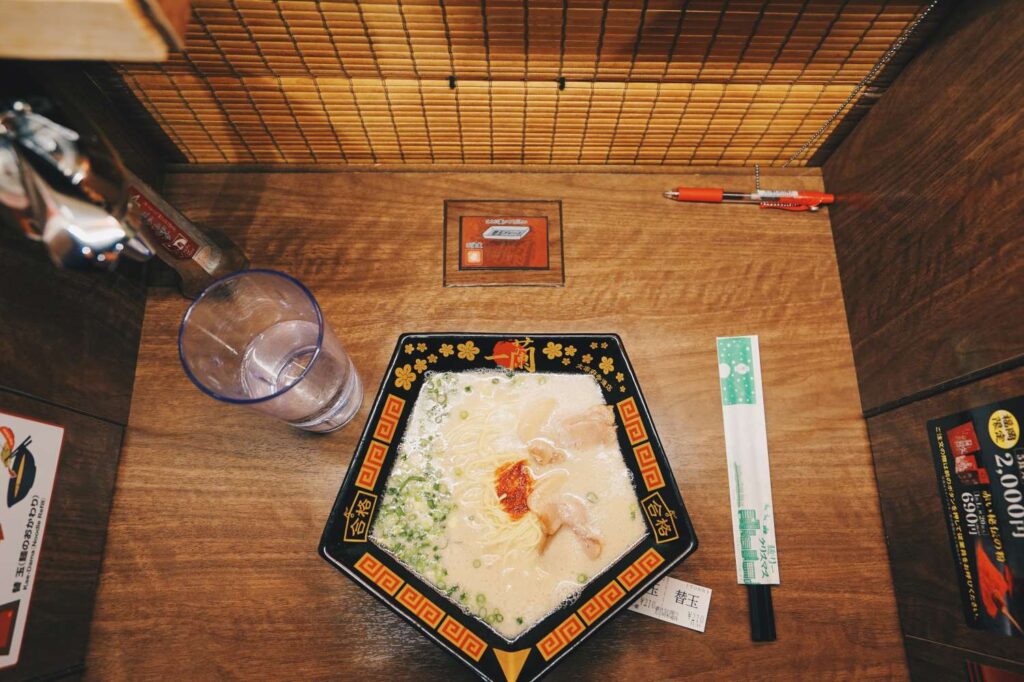
Chikushian (筑紫庵) – Craving for some burgers? Chikushian is famous locally for its chicken karaage (チキン唐揚げ) hamburgers. That is crispy and juicy Japanese-styled fried chicken served with tartar sauce, their locally-made sweet and sour plum sauce, and topped with fresh cabbages and toasted buns. A true definition of fast food, a simple and hearty meal, especially for those who prefer to have a simple meal.
For Those Who Don't Mind Splurging
Wagyu Mentai Kagura (和牛めんたい 神楽) – Looking for a unique luxury dining experience? Wagyu Mentai Kagura is a newly established restaurant some of the heartiest meal in town; one of the only restaurants that combines Wagyu beef (和牛) and mentaiko (明太子/marinated roe) into a bento meal (弁当). The result is a surprisingly delicious lunchbox meal; with the salty mentaiko complimenting the juicy wagyu beef on top of a hearty Tamago-don (玉子丼/egg rice bowl).
All of these is served inside their unique traditional wooden box that is made without nails and is filled with meticulously crafted geometric patterns. Some of their standout meals include their signature dishes Wagyu Mentaiko Gozen (和牛めんたい御膳), Mentai Sanmai Gozen (めんたい三昧御膳) and for the udon lovers, Hakata Mentai Creamy Udon (博多めんたいクリーミーうどん).
If You Are Into Cafe Hopping
Starbucks Dazaifu (スターバックス太宰府)– Japan’s most famous Starbucks; designed by world-renowned architect Kuma Kengo (隈研吾) . This Starbucks unique point is its unique architecture and interior; utilising the traditional jointing woods or kigumi (木組み) method to create a structure without nails. The interior is surrounded by the light brown joint woods to give an impression that you are enjoying your cup of coffee in the middle of a forest. Be sure to pay a visit to this unique Starbucks branch and snap a photograph with its striking design.
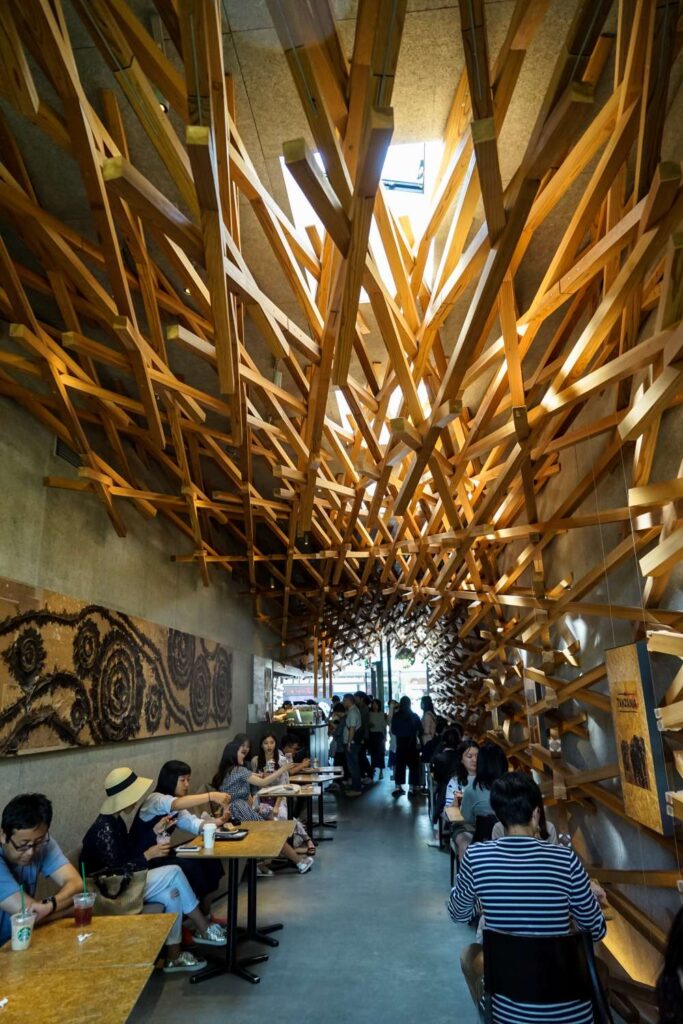
Kazamidori (風見鶏) – Looking for something outside of the usual tourist hotspot? Then, check out the 140 years old vintage café Kazamidori (風見鶏). This quaint and vintage café features an impressive interior that blends both traditional Japanese and European vintage styles. The café’s tranquil environment, coupled with the variety of European antiques in display together with the classical Japanese-style windows offers an authentic experience of what is like dining in a café back in the 1800s.
Ishin-no-iori (維新の庵) – If you are into Japanese gardens, swing by Ishin-no-iori. This little café contains a serene and peaceful Japanese garden tucked in its backyard. From the lush trees to the mossy grounds and the rustic stone lanterns, this is a wonderful place to soak yourself into the tranquility of mother nature and getaway from the crowd. And to top up your experience, check out the café’s best seller cooling drinks including their melon soda (メロンソーダ) and matcha green tea (抹茶).
Getting to Dazaifu
The most convenient way to access Dazaifu is via Fukuoka (福岡), as it is only approximately 30 minutes away via train ride. Fukuoka is well-connected by expressways and rails; and the city’s main train station is Hakata Station (博多駅). Both the JR Rail Pass and the JR Kyushu Rail Pass are worth considering if you are intending to travel extensively across cities in Japan. These passes offers the convenience to travel across cities and also opportunities to save cost as well. The former covers the JR lines across the entire country; while the latter is more suitable for those travelling around cities in the island of Kyushu only. Check out JR Rail’s website to learn more about these handy passes.
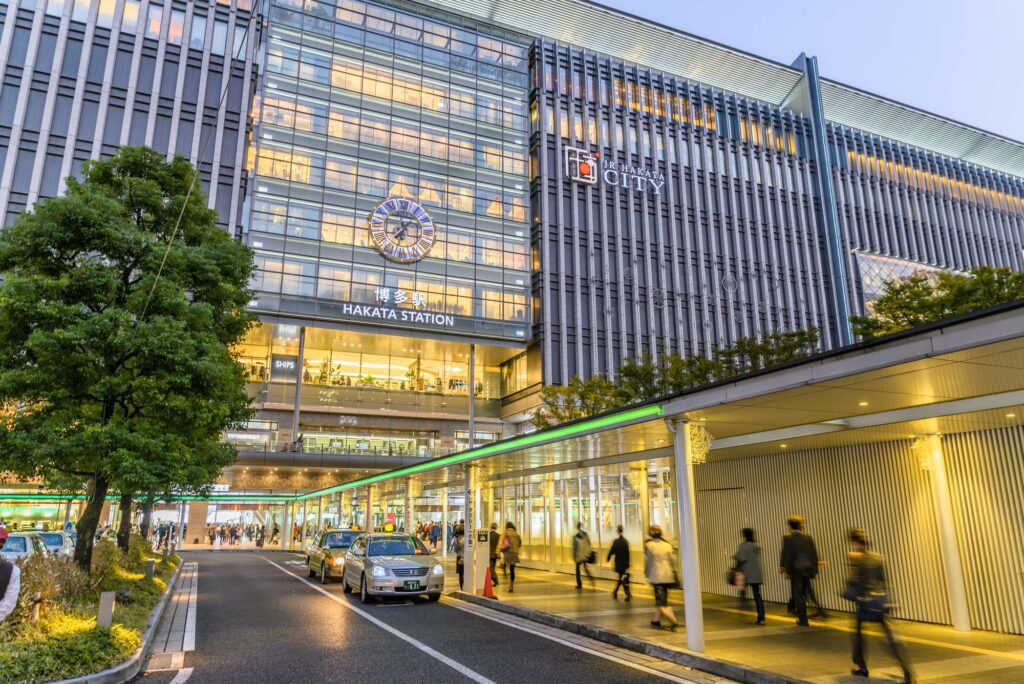
By Train
The most convenient option is to board the Nishitetsu Railway (西鉄) from Tenjin station (天神駅) in Fukuoka. Board the train along the Nishitetsu-Tenjin-Omuta line (西鉄天神大牟田線) for 15 minutes and transit at Nishitetsu Futsukaichi Station (西鉄二日市駅). Afterwards, board the Nishitetsu Dazaifu line (太宰府線) for 5 minutes and disembark at Dazaifu Station (太宰府駅). A one-way train ride will cost about 420 Yen. If you are from Hakata Station (博多駅), you will need to board a subway train to Tenjin station.
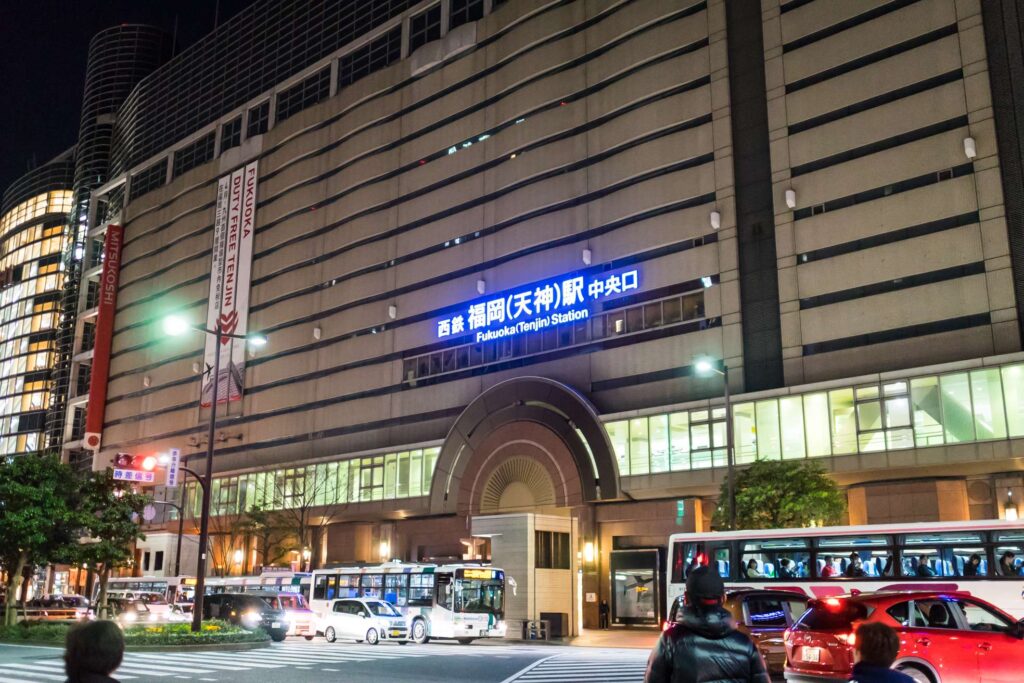
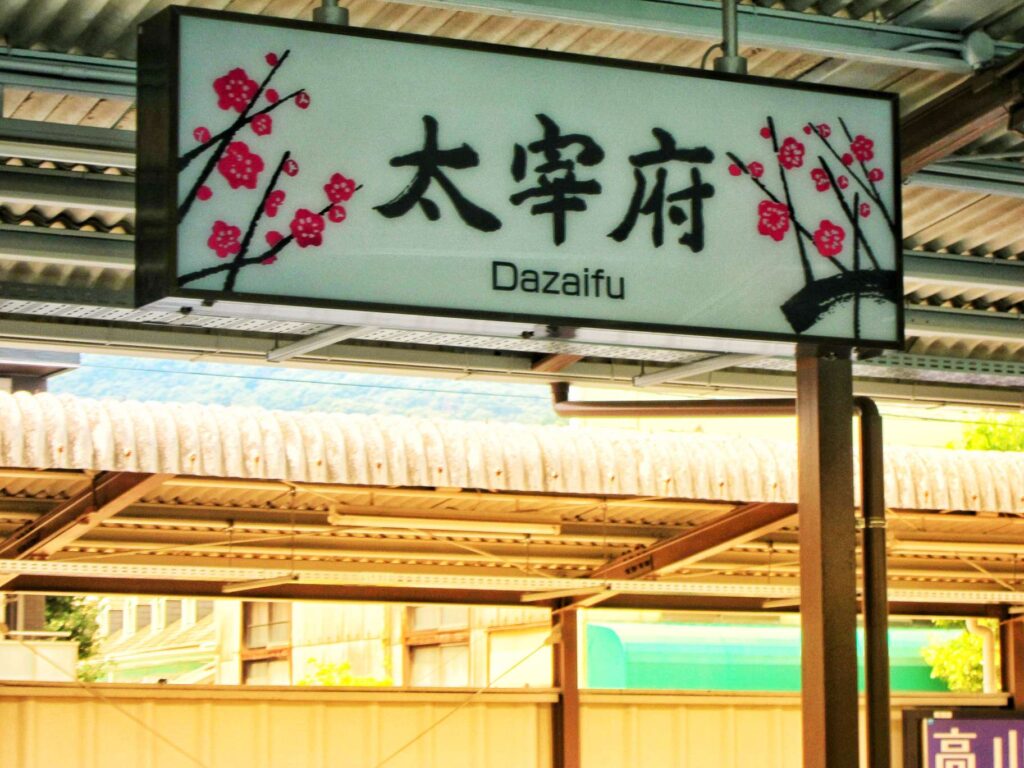
Consider getting yourself a Nimoca Card if you are planning to use the bus and trains around Fukuoka as it saves you a hassle to grab your wallet just to get the little changes to pay for the rides. Alternatively, there is also the Fukuoka Tourist City Pass which offers unlimited rides on trains, buses and subways in Fukuoka, as well as providing special privileges at various tourist facilities.
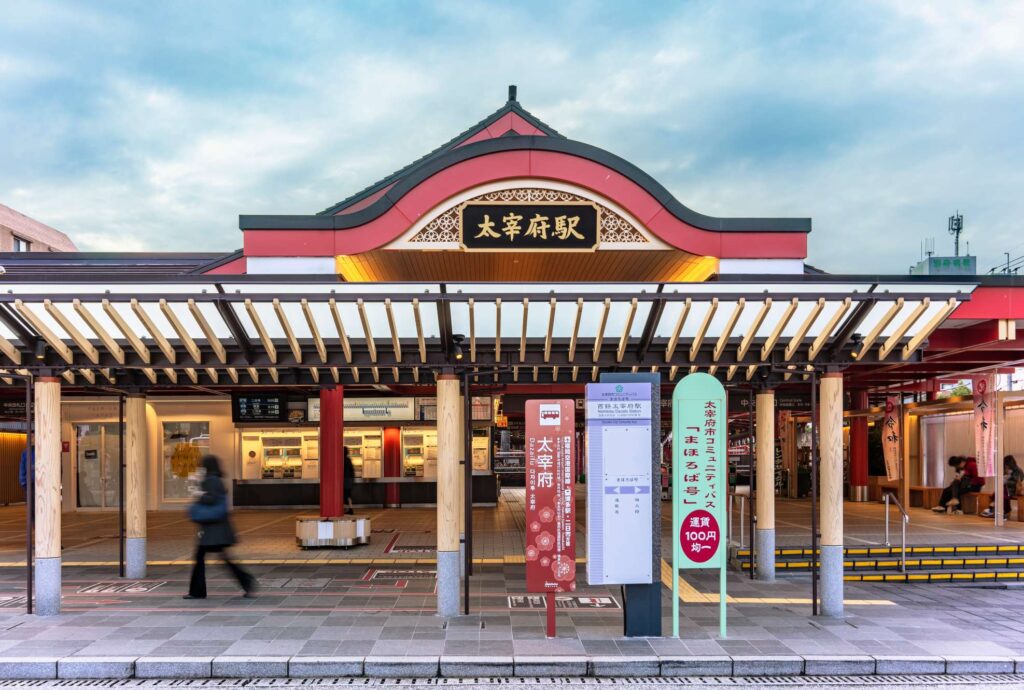
By Bus
Another option is to catch the Dazaifu Liner Bus, Tabito (旅人) from Hakata Station (博多駅) to Dazaifu. The buses operate frequently on a daily basis and departs from Hakata Bus Terminal 1F Bus Stop No.11 (博多バスターミナル1F (11のりば)). The journey takes around 40 minutes and the fare is 610 Yen for one-way. An alternative for those who prefer the direct approach, though I personally would opt for the train simply to catch those scenic countryside views.
By Car
For those who are planning a road trip in Japan to explore the countryside, Dazaifu is also easily accessible via road given its close proximity with Fukuoka (around 30 minutes). In fact, a friend of mine used Tocoo; Japan’s leading rental car website which is reliable and provides a wide selection of cars, ranging from small economical cars to the larger family cars. Tocoo offers comprehensive and elaborate guides especially for those who are going to drive for the first time in Japan. Click here to embark on a wonderful journey of driving through the countryside of Japan.
Where to Stay
Given Dazaifu’s status as a sleepy town, the most convenient choice will be to book a hotel in Fukuoka. However for those who are planning to stay a night in Dazaifu, there are a couple of options to consider:
Budget and Mid-range
1. Sonic Apartment Hotel is a convenient and budget option for those wishing to stay nearer to Dazaifu’s main attractions such as Dazaifu Tenmangu (only 5 minutes walk away). The accommodation offers not only free parking and wi-fi, but also a balcony in the rooms to chill and enjoy the view. And not to mention, they offer free parking as well.
2. Route Inn Grantia Dazaifu is another alternative for those who are willing to spend more. While it is further from Dazaifu’s main attractions (20 minutes walk or 5 minutes drive from Dazaifu Tenmangu), it offers more spacious rooms and also a lot more facilities in return. These includes a Korean sauna, a relaxation room with massage chairs and more importantly, hot spring baths and open-air baths to relax.
Luxury
If you are willing to splurge and in love of Japanese traditional houses, consider a stay at Hotel Cultia Dazaifu. This 4 star hotel was renovated from a Japanese home that was constructed during the 19th century; featuring a stunningly beautiful interior that combines both traditional design and modern comfort.
The hotel also offers a night visit tour to the famed Dazaifu Tenmangu itself, where one can experience a unique serenity across the shrine grounds in contrast to its bustling environment during the day. Guests will also get to enjoy lunch and dinner at the hotel’s restaurant, ‘Le UN HOTEL CULTIA Dazaifu’ which offers a wide range of French-fusion meals.
Stay Connected with Portable Wifi
While there are several spots in Japan that do offer Wifi, it can be difficult to access the internet in many areas in the countryside. For our trip in Japan, my wife and I used Ninja Wifi and we had an easy time travelling to even the smallest towns and secluded mountains while staying connected with our families.
Ninja Wifi offers eSIM and portable Wifi services that provided us with a stable internet connection during our road trip in Japan. In particular, the portable Wifi allows several devices to connect simultaneously and all we need to do was to scan the QR code and we easily got connected in just a minute. Book your Wifi services here with 10% discount for your next Japan trip!
Overall Thoughts
A peaceful small city that is rich in culture and history, Dazaifu makes for a wonderful side trip destination, especially for those staying in Fukuoka. It was once a cradle of Japanese civilisation and despite losing its status as a capital, it retains its charm not just as a historic centre but also a quaint travel destination for those seeking to escape the crowded city. If you are looking for a nice getaway from the city, consider paying a visit to Dazaifu.
Also, you might also be interested in these Dazaifu-related articles….
Loving the content here?
Get your free Japan Hidden Gems Bucketlist!


You May Also Like
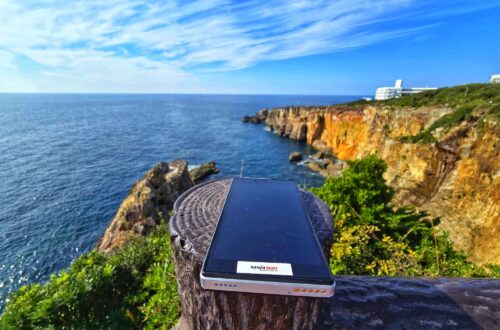
Ninja Wifi – How to Rent the Best Portable Wifi in Japan
December 28, 2024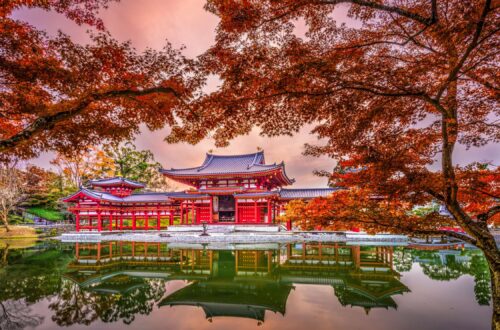
9 Kyoto Day Trip Gems You Can’t Miss: Get The Ultimate List of Panoramic Views
October 19, 2024